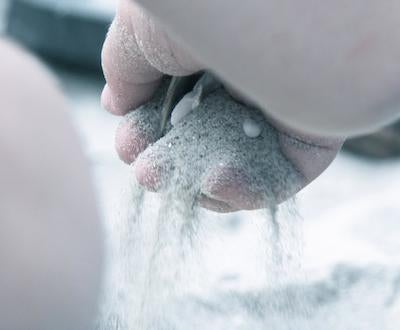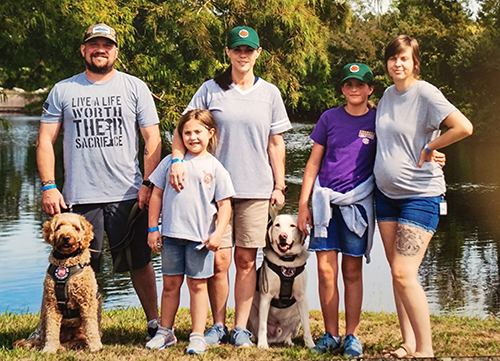
Summer Activities for Kids with Autism or Sensory Processing Disorders

Summer is a chance to play, rest and enjoy a change of pace. The shift in environment and pace can be more challenging for children with autism (ASD) or other sensory processing disorders, however, so we’ve worked with Dr. Cathy Pratt, Director of the Indiana Resource Center for Autism at the Institute on Disability and Community, to share some creative ideas for summer fun for kids on the spectrum or kids who are simply sensory sensitive.
Summer fun starts with embracing exploration with new sensory activities, which may help improve sensory processing while reducing stress. Get outdoors and pay close attention for signs of frustration or overstimulation so you’ll know when to take a break.
- Try seasonal foods through cooking activities. A farmer’s market may overwhelm some kids, but you can always bring summer fruits and vegetables home to try. Prepare them together in your kitchen or try campfire-style, explaining what to do step by step.
- Sandboxes make for a wonderful sensory play. If you don’t have one, create your own sensory table or bucket with any large container (i.e. a small plastic pool, a large plastic storage bin) and fill it with sand or water. You can also include some natural elements to discover within it, like flower petals or small toys.
- Consider sensory needs with swimwear and sunscreens. But soft fabrics and fragrance-free lotions or sprays. Apply before you leave the house for the day or start a new activity. If your child is sensitive to some of these safety measures, then try alternatives like sun hats, sunglasses or soft, sun-blocking shirts.
- Schedule a time to safely swim together in a pool. Borrowing some time at a friend’s pool or scheduling private swimming time at a local pool (much like scheduling a private swim lesson) may help your child ease in and enjoy. Swimming helps with body awareness (if you want to get technical, we call this proprioception) and tactile input.
- Build an obstacle course together in your yard or at a familiar playground.
- Ride bikes or scooters.
- Go to the playground.
Feeling adventurous? We've got a list of 39 amusement parks that offer special needs passes.








 “Streaming is both accessible and not accessible,” Evans said. “The streaming part itself is accessible, in that it allows me to make my own schedule, and I can work it around my disabilities. However, the inaccessible part is the demand for content creators to constantly be networking, attending events and continuously pushing out content. I cannot attend events, and if I can they’re incredible stressful, so all my work networking has basically been done online, which thankfully is becoming a more acceptable side of content creation.”
“Streaming is both accessible and not accessible,” Evans said. “The streaming part itself is accessible, in that it allows me to make my own schedule, and I can work it around my disabilities. However, the inaccessible part is the demand for content creators to constantly be networking, attending events and continuously pushing out content. I cannot attend events, and if I can they’re incredible stressful, so all my work networking has basically been done online, which thankfully is becoming a more acceptable side of content creation.” “I must say over the years it has become less and less accessible for me,” Martínez said. “SMA (Spinal Muscular Atrophy) causes strength, endurance and mobility loss as time passes. I can’t use a physical keyboard as I used to, so it’s been years now with an on-screen keyboard. Voice dictation doesn’t work well for me due to my voice being inconsistent, not to mention my accent. In English it can go from totally wrong to acceptable. In Spanish, my native language, it works better.”
“I must say over the years it has become less and less accessible for me,” Martínez said. “SMA (Spinal Muscular Atrophy) causes strength, endurance and mobility loss as time passes. I can’t use a physical keyboard as I used to, so it’s been years now with an on-screen keyboard. Voice dictation doesn’t work well for me due to my voice being inconsistent, not to mention my accent. In English it can go from totally wrong to acceptable. In Spanish, my native language, it works better.” “What drew me to consulting was the opportunity to leverage my unique perspective as both an able-bodied and disabled gamer to improve the gaming experience for others,” Lane said. “I can share the frustrations I’ve faced as a disabled gamer and use that knowledge to advocate for better accessibility features. Companies and studios that I work with go the extra mile to make sure I have everything I need to succeed.”
“What drew me to consulting was the opportunity to leverage my unique perspective as both an able-bodied and disabled gamer to improve the gaming experience for others,” Lane said. “I can share the frustrations I’ve faced as a disabled gamer and use that knowledge to advocate for better accessibility features. Companies and studios that I work with go the extra mile to make sure I have everything I need to succeed.”



Connect with us on social media